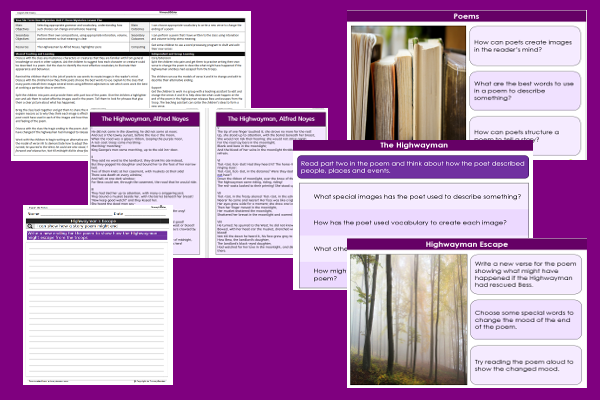Lesson Five – Highwayman Escape

This English teaching pack for Key Stage Two gets the children to compose and present a new verse for a narrative poem to match its structure and illustrate an alternative ending scene for the characters in the story.
The class can suggest and model how they might perform their new poetry verses to an audience to indicate the selected mood in their alternative ending scene.
Download this teaching pack including a lesson plan, classroom activities and an interactive presentation to teach the children to compose and present a new verse for a narrative poem to match is structure and illustrate an alternative ending scene for the characters in the story
Activities in this teaching pack include shared reading texts to identify and describe how poets use figurative language to describe people, places and events in a narrative poem and a template to help compose a new ending for a narrative poem illustrating an alternative sequence of events.
The interactive presentation gets the children to explore how to compose a new verse for a narrative poem illustrating an alternative ending scene for the characters.
This lesson is part of an English scheme of work to get the children to explore and adapt vocabulary used in a narrative poem to describe characters and settings. There are teaching activities for shared learning, differentiated worksheets to support independent learning and interactive presentations to introduce concepts and key skills.
-

Maths Arithmetic Assessment
Assess abilities in solving arithmetic number problems for addition, subtraction, multiplication and division when working with informal and formal written calculations
-

Environment
Identify and describe some of the special landscapes and locations that can be found in the world and reflect on how they can be protected and preserved for the future
-

Silent Letter Words
Explore and illustrate the meanings and spellings of some different words with silent letters when using them in a range of topics and scenarios
-

Complaint Letters
Explain and model how to format and structure writing when composing letters of complaint about different issues and scenarios
